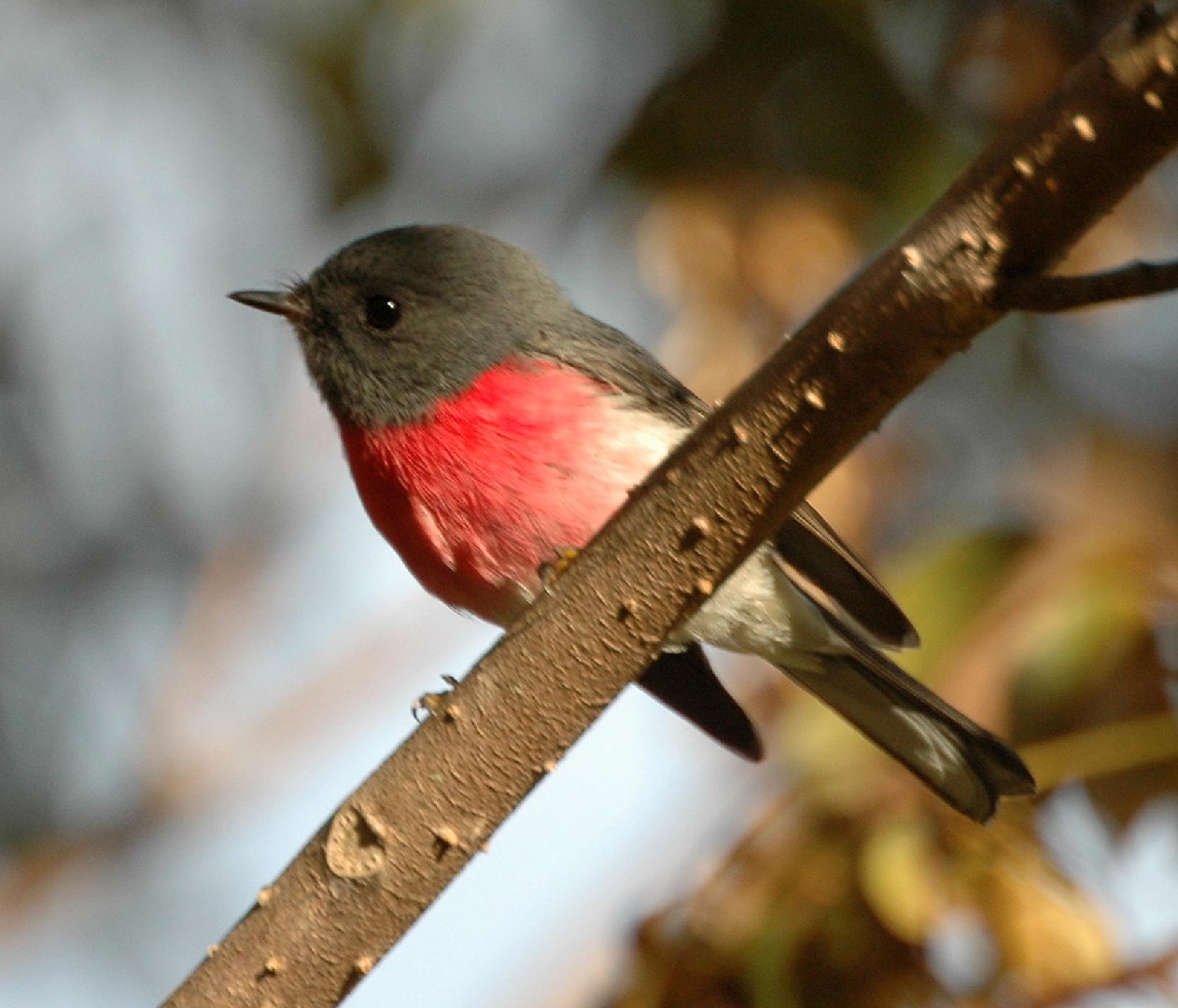Rose Robin
A species of Australian Red Robins and Allies Scientific name : Petroica rosea Genus : Australian Red Robins and Allies
Rose Robin, A species of Australian Red Robins and Allies
Botanical name: Petroica rosea
Genus: Australian Red Robins and Allies
Content
Description General Info
 Photo By Aviceda , used under CC-BY-SA-3.0 /Cropped and compressed from original
Photo By Aviceda , used under CC-BY-SA-3.0 /Cropped and compressed from original Description
Adult birds are around 11 cm (4.3 in) in length. The male rose robin has a pink breast and abdomen, with dark grey head, throat, back and tail. The frons and outer tail shafts are white. There is no white wing bar. The female is plain-coloured; pale grey-brown above, and grey-white underneath, with small white marks on the wings and over the bill. The bill, legs and eyes are black. Both the male and female make a tick call. 
Size
12 cm
Nest Placement
Tree
Feeding Habits
Rose Robin primarily consumes insects and arthropods, foraging chiefly 2-5m above ground with aerial sallies and gleaning among outer foliage. Unique preferences include occasional ground feeding and joining mixed-species flocks for foraging efficiency.
Habitat
Rose Robin prefers dense habitats, predominantly residing in wet sclerophyll forests and rainforests characterized by eucalyptus and acacias, especially within sheltered gullies and valleys. They are inhabitants of broader eastern and southeastern mainland regions, avoiding more arid areas except during non-breeding seasons when they may venture into open forests, woodlands, and occasionally gardens. Conservation areas provide crucial sanctuaries, offsetting habitat loss due to extensive land development and deforestation.
Dite type
Insectivorous
General Info
Feeding Habits
Bird food type
Behavior
Found in ones or twos, rose robins tend to feed in the tops of trees. Insects and spiders form the bulk of the diet, with most being caught while the robin is flying. Unlike other robins, the rose robin does not return to the same branch while foraging. Prey consists of a variety of spiders and insects, including caterpillars, wasps, bugs such as cicadas and cinch bugs, beetles such as jewel beetles, leaf beetles, leaf-eating beetles and weevils, flies and ants. 
Distribution Area
The rose robin occurs in eastern and southeastern Australia, from Rockhampton east of the Great Dividing Range through eastern New South Wales and Victoria into southeastern South Australia. It does not occur in Tasmania. It is found in wet sclerophyll forest and rainforest, where it inhabits gullies and valleys, dispersing to drier forest in cooler months. The rose robin is vulnerable to development and clearing of forested areas, which has led to it disappearing in these areas. Populations have been recorded in conservation areas, namely the Dandenong Creek, Scotchmans Creek and Gardiners Creek Corridors, in Melbourne's eastern suburbs. 
Species Status
Not globally threatened.